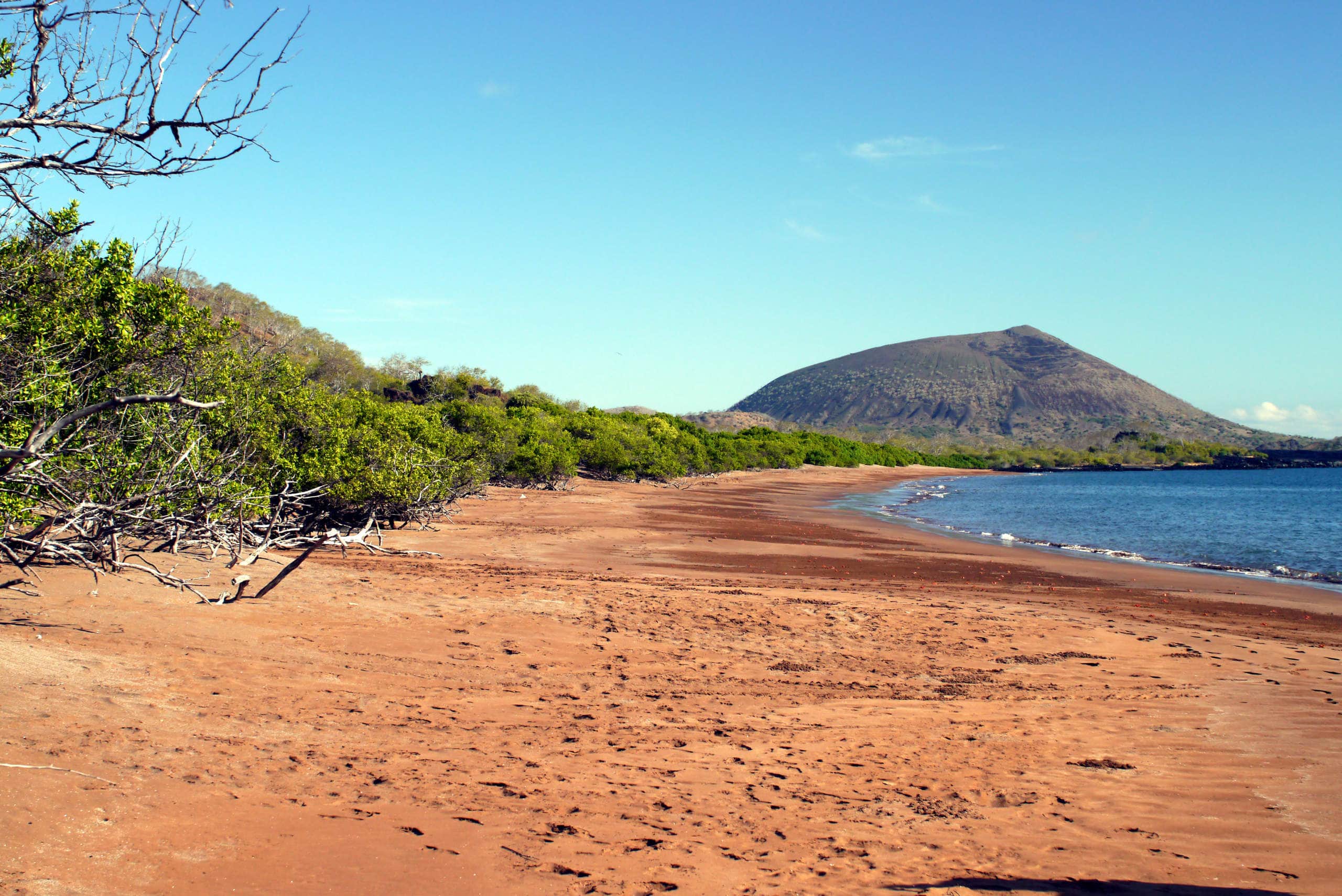
Follow Charles Darwin’s footsteps in the Galapagos Islands
Charles Darwin’s most influential work – the Origin of Species, wherein he details his theory of evolution – was inspired by his voyage to the Galapagos Islands. Today, his name is inextricably linked with the archipelago. However, back in the 1800s, it was mere fate which brought him to these enchanted shores.
In 1831, the HMS Beagle was ready to set sail from England on a mission to survey the coasts of South America. At the time, captain Robert Fitzroy had invited botanist Stevens Henslow to accompany him on the two-year-long voyage. Wary of the long absence, Henslow declined the opportunity and recommended that his student, Charles Darwin, take his place instead.
It was Darwin’s first and only time on a ship – a voyage which ended up being a lot more eventful than he could’ve ever imagined.
The HMS Beagle sailed for over twice the duration that had been originally planned, only reaching the Galapagos Islands in September 1835. This hadn’t been part of the ship’s itinerary, but it was an expedition that Darwin was most looking forward to. In a letter to Henslow, he wrote about his excitement to discover the archipelago’s unique landscapes and see active volcanoes up close.
Darwin spent a grand total of five weeks exploring the Galapagos Islands. The HMS Beagle was far too big to anchor near any of the shores, so it’d sail in the deeper waters while the crew made their way to land on smaller boats. Their first destination was San Cristóbal Island, or Chatham Island as it was known at the time.
San Cristobal Island
The crew arrived to a warm welcome by the island’s endemic species including giant tortoises, marine iguanas, and blue-footed boobies. It was unlike any place they’d been before, with wild animals which showed no fear of humans.
For the tortoises, this ended up being a misfortune. They became the primary source of food aboard the HMS Beagle during its time in the Galapagos Islands. The marine iguanas were better off, only suffering harm by way of Darwin’s words. In his observations, he described them as the ‘most disgusting clumsy lizards’ which he’d ever seen.
Later on in their journey, Darwin and the crew would find out that San Cristóbal was the only island in the Galapagos archipelago where freshwater could be found.
Floreana Island
At the next stop – known as Charles Island at the time – Darwin was greeted by the acting governor of Galapagos, Nicholas Lawson. Lawson took the crew on a tour of the island, offering insights into his time there. He recounted that although giant tortoises could be found on a number of islands in the archipelago, they could be differentiated by the shape of their shells. This was a keen observation which would help Darwin develop his theory of evolution.
During the rest of his time there, Darwin noted similar occurrences among other species too. There were a variety of mockingbirds and finches across the islands, which seemed to have adapted to their environment in different ways. The finches – a group of thirteen species – are referred to as Darwin’s finches today.
Five of these species can be found on Floreana Island, including the medium tree finch which can’t be spotted anywhere else. While sailing on our Galapagos cruise, guests will have the opportunity to spend a day here, discovering a variety of wildlife including flamingos, tortoises, and maybe even stingrays in the nearby waters.
Isabela Island
Over on Isabela Island, Darwin had his first sighting of land iguanas. He also discovered another species of mockingbird and studied the eating habits of marine iguanas. In his written accounts, Darwin spends majority of his time detailing his time on Isabela, despite spending fairly little time there.
While here, the HMS Beagle crew tried to locate a lake – now named after Darwin – which had been rumored to be filled with freshwater. It was situated in a tuff cone near Tagus Cove and reaching it involved a fairly challenging trek. To the sailors’ misfortune, once they reached Darwin lake, they discovered that the rumor had been a lie. The water in the lake turned out to be even saltier than seawater. To this day, Darwin lake’s origin and the saltiness of its water remains a mystery.
The lake is one of the Galapagos Islands’ top visitor sites today. The trek has been made significantly easier, with a staircase leading a two-kilometer-long trail around the saltwater lagoon. This is the perfect place to get your postcard-worthy photo, with Aqua Mare perfectly anchored in the backdrop.
Santiago Island
Now running low on supply, the HMS Beagle sailed to Santiago Island in search of fresh water. The crew’s disappointment continued as there was none to be found here either. Instead, they’d have to sail back to San Cristobal to replenish their supply.
Darwin opted to disembark instead. Along with a few other crew members, he stayed behind on Santiago for an entire week, exploring the island and collecting specimens for his research.

In similar fashion, Aqua Mare guests will have the opportunity to discover the black sand beaches and stunning lava flows which make up Santiago Island today. Unlike Darwin and the crew though, Aqua Mare has stabilizers providing the luxury and comfort of a smooth sailing, and there’ll be no need to go searching for food and water. Each day will feature world-class cuisine curated by renowned chef Pedro Miguel Schiaffino.
Follow in the footsteps of Charles Darwin and book a 7- or 14-night sailing aboard Aqua Mare, the first superyacht sailing the Galapagos Islands.



